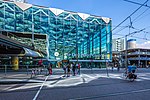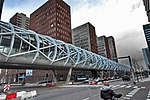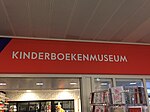Haagse Bos
Forests of the NetherlandsNeighbourhoods of The HagueParks in South HollandUrban public parks

Haagse Bos (Dutch pronunciation: [ɦaːxsə ˈbɔs], literally Forest of The Hague) is a rectangular neighbourhood and forest in the Haagse Hout district of The Hague, Netherlands, reaching from the old city centre in the south-west to the border of Wassenaar in the north-east. It is also one of the oldest remaining forests of the country. During World War II, the park was used by the Germans for launching V-1 and V-2 rockets.
Excerpt from the Wikipedia article Haagse Bos (License: CC BY-SA 3.0, Authors, Images).Haagse Bos
Ary Schefferstraat, The Hague Haagse Hout
Geographical coordinates (GPS) Address Website External links Nearby Places Show on map
Geographical coordinates (GPS)
| Latitude | Longitude |
|---|---|
| N 52.090277777778 ° | E 4.3333333333333 ° |
Address
Haagse Bos
Ary Schefferstraat
2597 VR The Hague, Haagse Hout
South Holland, Netherlands
Open on Google Maps











